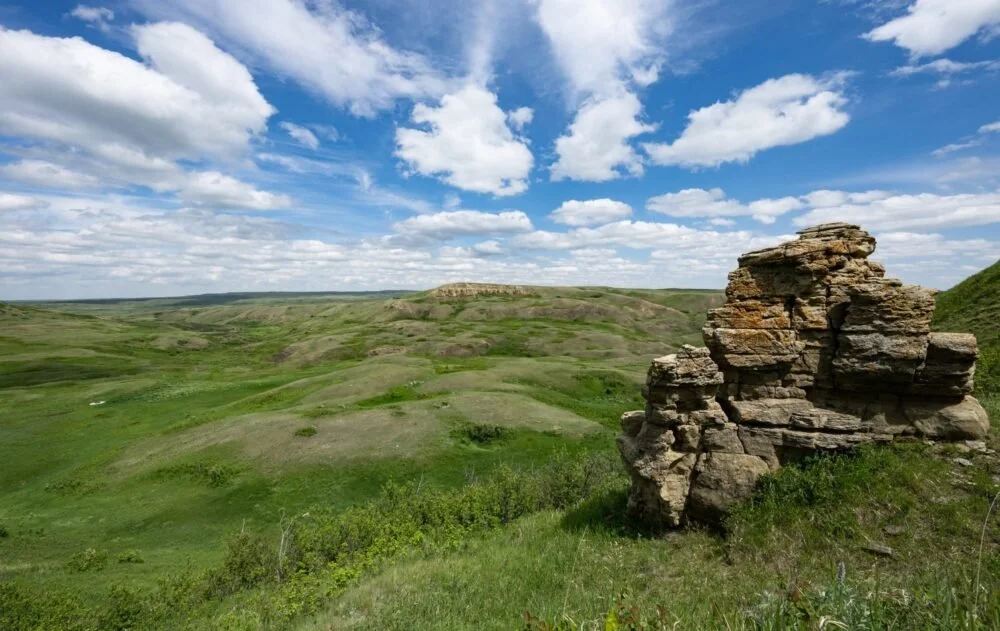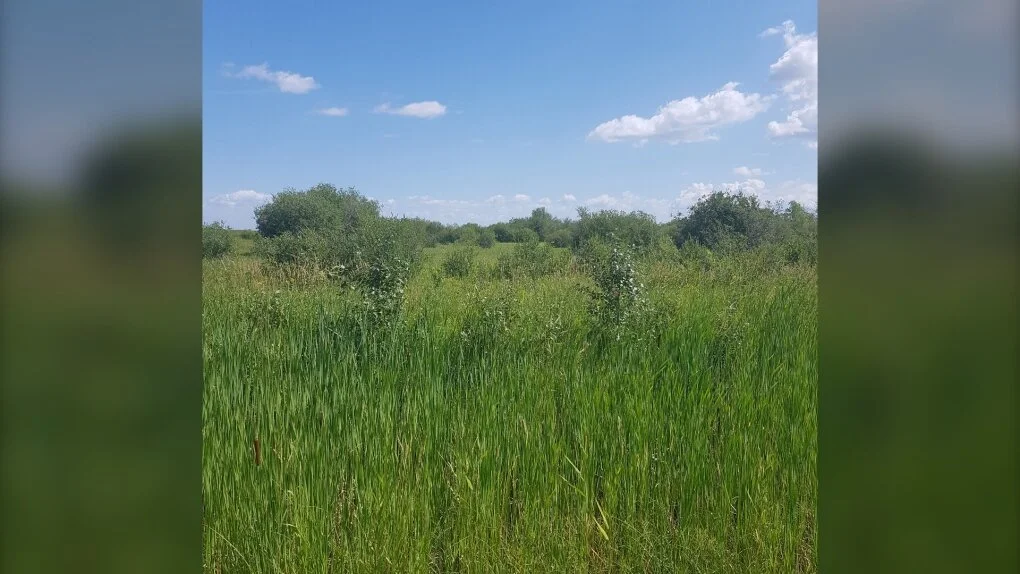Canada’s iconic Prairie grasslands are in peril, but the Nature Conservancy of Canada (NCC) has sprung into action to try to save the vital ecosystems. Its Prairie Grasslands Action Plan proposes to conserve more than 500,000 hectares (more than 5,000 square kilometres) by 2030 —- six times the size of Calgary. In a recent interview with The Weather Network, Jeremy Hogan, NCC's director of prairie grassland conservation, said only 18 per cent of Canada's original grasslands remain. "We have taken the grasslands for granted a little bit. They're one of our most productive ecosystems in terms of food production, but also services like water storage, filtration [and] preventing droughts and floods," said Hogan.
Conservation leaders join forces on largest private grassland project in Canadian history
The Nature Conservancy of Canada (NCC) and Ducks Unlimited Canada (DUC) are working together to conserve one of the largest remaining tracts of intact Prairie grasslands and wetlands in Canada. McIntyre Ranch, located south of Lethbridge, will be conserved through an agreement (conservation easement) between the landowners and the two organizations. This 130-year-old ranch is one of the largest private landholdings in Canada, and spans over 22,000 hectares — an area more than a quarter the size of Calgary.
Nature Conservancy of Canada touts plan to protect 5,000 square km of Prairie grasslands
"They provide a lot of what we call ecosystem services," he said. "So, they provide a lot of benefit to everyday Canadians' lives, even if you don't live or work in the grasslands." They store and filter water, preventing both floods and droughts. They improve water quality. They keep soil in place, because of extensive root networks, so there's less erosion along lakes and rivers.
Organizations pushing for accelerated conservation efforts in Canada
“It’s not just wildlife. These are important areas for our headwaters, the drinking water that supports ourselves, our industries and our natural ecosystems,” Feagan said. It’s those waters that have the attention of officials with the Canadian Parks and Wilderness Society – Southern Alberta Chapter (CPAWS). “We want to make sure that trout populations are healthy, but we want to make sure the water itself is healthy,” said executive director Katie Morrison.
Nature Conservancy of Canada purchases land for protection in southern Alberta
The announcement comes a few months after the organization announced a $6.9-million campaign to save a 16.5-square-kilometre property called the Yarrow, which is also in southern Alberta but "a little farther north" from the latest project and just outside what's traditionally known as the Waterton Park Front. The Yarrow also features grasslands, wetlands, creeks, mixed forests and includes 27 wildlife species of provincial and national significance. There are two streams that provide fish habitat and transport water from Alberta's southern headwaters to rivers across the Prairies that flow to Lake Winnipeg and eventually Hudson Bay.
Nature Conservancy of Canada announces campaign to save landscape in southern Alberta
The Nature Conservancy of Canada has announced a $6.9-million campaign to save a distinctive landscape near Waterton Lakes National Park in southern Alberta. The 1,650-hectare property, called The Yarrow, is located near the hamlet of Twin Butte, about 80 kilometres southwest of Lethbridge. The NCC says the property features grasslands, wetlands, creeks and mixed forests and includes 27 wildlife species of provincial or national significance — including grizzly bears, birds called bobolinks and little brown bats.
700 kilograms of old flood debris found in Grand Lake-area woods
Caroline Blakely and 13 other volunteers found a fridge tangled about 300 metres deep in the woods, along with children's toys, fishing poles, roofs, water heaters and lumber on the west side of Grand Lake. The garbage was likely from floods in 2018 and 2019, where unprecedented water levels destroyed homes and displaced more than 1,100 residents along the St. John River and nearby lakes.
Guest column: Working to improve and protect nature across the country
Across Canada, people have been ramping up their efforts to protect our planet. In 2021, Indigenous communities, donors, land owners and all levels of government came together with the Nature Conservancy of Canada (NCC) to protect more than 200 square kilometres of wetlands, beaches, forests and prairie. These big, bold projects are vital to tackling the twin crises of biodiversity loss and climate change. We saw heatwaves, droughts, wildfires and severe floods in the past year. Nature conservation projects give me hope for restoring a healthy planet where people can thrive, despite the gravity of these crises.
Zombie plant a threat to fish and even swimmers
Prince Edward Islanders are being asked to take extra care when moving their boats around this fall. The Nature Conservancy of Canada is concerned about the spread of Eurasian water milfoil, also known as zombie plant. The invasive species has been reported at a few sites on P.E.I. "It's a challenging one to manage," said Andrew Holland, national media relations director with NCC.
The Nature Conservancy of Canada is working to conserve two wetlands along Lake Winnipeg
The Nature Conservancy of Canada (NCC) is working to protect two ecosystems along Lake Winnipeg. The NCC said it is hoping to protect Breda Bay and Siglavik, calling the two ecosystems, "significant shoreline properties." The two areas near Gimli take up 45 hectares and the NCC said conserving them would impact the current and future health of the lake. "They represent one of the last natural areas along the southwest shore of Lake Winnipeg and we are working with local private land owners to conserve them for nature and people forever," said Cary Hamel, director of conservation for NCC’s Manitoba region.
From wastelands to conservation: Why Alberta needs to start thinking about its wetlands
Tuesday marks the 50th anniversary of an international agreement to protect wetlands around the globe, and this may get you thinking what is so important about wetlands. For awhile they were looked at as wastelands, but over the past few decades, science has shown just how important these areas are. Dan Kraus, a senior conservation biologist with the Nature Conservancy of Canada, says wetlands were the first habitat to have been protected through a global agreement.
Back to top Op/Ed: Marking 50 years of wetland conservation and loss
Fifty years ago, nations gathered to create the world’s first global agreement to conserve a habitat. This had long been undervalued, and as a result was rapidly disappearing. Fifty years ago, there was a global call to action to save our wetlands. On February 2, 1971, the Convention on Wetlands of International Importance was adopted in Ramsar, Iran. Often referred to as the Ramsar Convention, its purpose was to stop the worldwide loss of wetlands. Today, 171 countries, including Canada, are parties to the convention. The Ramsar Convention has helped many wetlands. More than 2,400 wetlands around the world have been designated as Ramsar Wetlands of International Importance. Canada has 37 Ramsar sites, including two Nature Conservancy of Canada helps protect in B.C., the Columbia Wetlands and in Creston Valley. World Wetlands Day marks the signing of the Ramsar Convention and is a day to highlight the importance of wetland conservation Despite a global agreement and a special day of recognition, we have not been kind to wetlands over the last half century. Over the past 50-years, over one-third world’s remaining wetlands have been lost. They continue to disappear at a rate faster than forests, and the loss is accelerating.
Halifax to probe problems around Williams Lake's falling water levels
Halifax’s vanishing Williams Lake could fill up again with a little help from the city, according to nearby residents. The water level had dropped by about 1.3 metres since late May when The Chronicle Herald featured one of the city’s favourite swimming lakes literally drying up on its front page in early September. But now a potential fix is being investigated for a dam that’s allowing water to flow too quickly to the sea.














